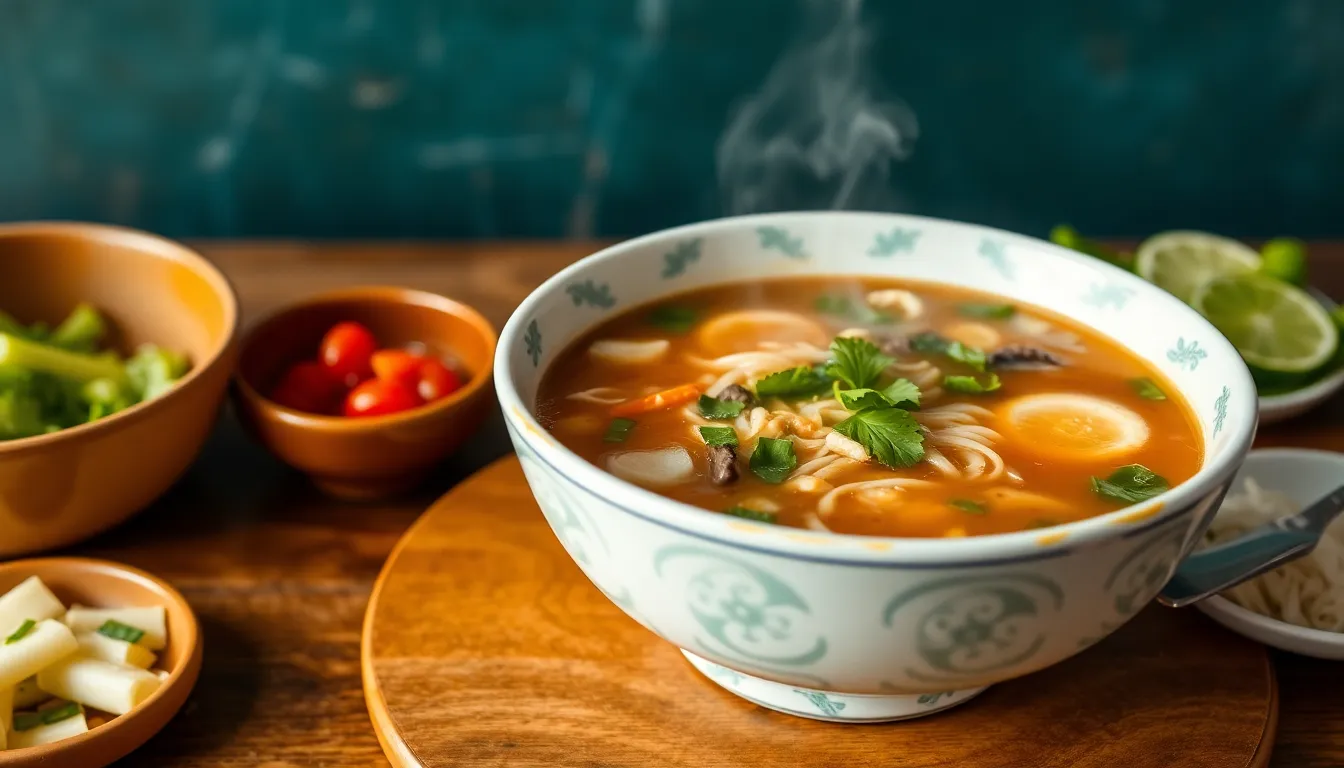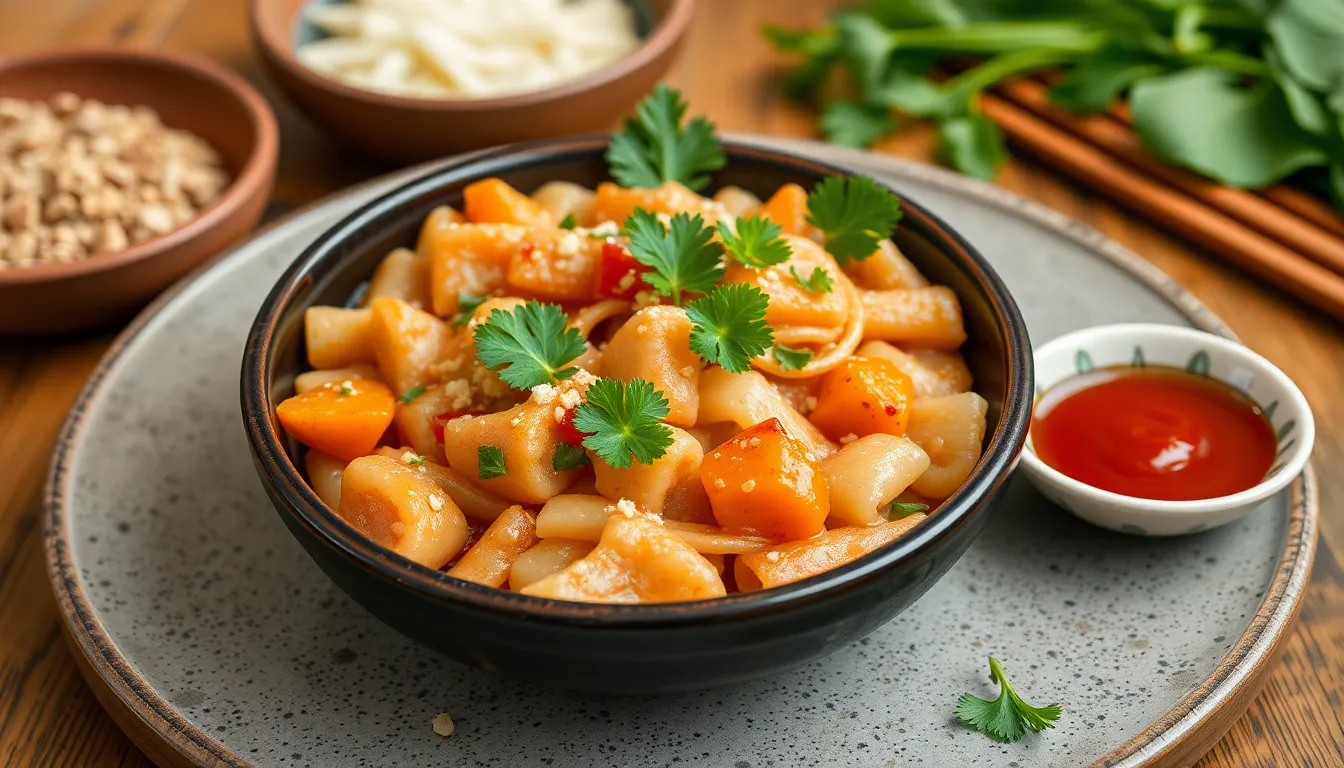Unlock the Secrets of Pho: A Step-by-Step Guide to Perfecting Vietnam’s Iconic Noodle Soup
In the world of culinary delights, few dishes evoke the warmth and comfort of Vietnam’s beloved Pho. This fragrant noodle soup, steeped in tradition and rich in flavor, has captured the hearts of food lovers worldwide. Whether slurped on a bustling street corner in Hanoi or enjoyed in the comfort of home, Pho represents more than just a meal; it is a cultural experience. In this guide, we’ll explore the intricate art of crafting the perfect bowl of Pho, ensuring that you can bring this iconic dish to your own kitchen with confidence.
Introduction: The Allure of Pho
The history of Pho dates back to the early 20th century, when it emerged in Northern Vietnam, influenced by French colonialism and the culinary traditions of both Chinese and Vietnamese peoples. Originally a street food, Pho quickly became a staple in Vietnamese cuisine, symbolizing the warmth of home and the hospitality of the Vietnamese people. Its significance extends beyond the bowl; it embodies a way of life where culinary traditions are cherished and shared.
For home cooks seeking to expand their culinary repertoire, mastering Pho is an essential skill. Not only does it impress family and friends, but it also provides a gateway to understanding the complexity of Vietnamese flavors and cooking techniques. In this article, you can expect to learn everything from the foundation of a flavorful broth to the final presentation of your Pho bowl. Get ready to unlock the secrets of Pho!
Section 1: The Heart of Pho – Understanding the Broth
1.1 The Foundation of Flavor: Ingredients for the Perfect Broth
The broth is the soul of Pho, and mastering it is crucial for a satisfying bowl. Here’s a rundown of the traditional ingredients used in Pho broth:
- Beef Bones: The primary source of flavor and richness.
- Ginger: Adds warmth and a smoky aroma.
- Onions: Contributes sweetness and depth.
- Star Anise: Imparts a distinct licorice flavor.
- Cinnamon Sticks: Provides warmth and sweetness.
- Cloves: Adds a hint of spice.
- Fish Sauce: Enhances umami and saltiness.
- Rock Sugar: Balances savory flavors with sweetness.
- Salt: Essential for seasoning.
Here’s a visual breakdown of broth ingredients, their roles, and substitutes:
| Ingredient | Role in Broth | Possible Substitutes |
|---|---|---|
| Beef Bones | Richness, depth of flavor | Pork bones, chicken bones |
| Ginger | Warmth, smokiness | Shallots, garlic |
| Onions | Sweetness, depth | Leeks, shallots |
| Star Anise | Licorice flavor | Anise extract, fennel seeds |
| Cinnamon Sticks | Warmth, sweetness | Allspice, nutmeg |
| Cloves | Spice | Allspice, cardamom |
| Fish Sauce | Umami, saltiness | Soy sauce (for vegetarian options) |
| Rock Sugar | Balances flavors | Brown sugar, honey |
| Salt | Essential seasoning | Sea salt, kosher salt |
1.2 The Art of Simmering: Techniques for Broth Perfection
Now that we have gathered our ingredients, let’s dive into the art of simmering the broth to perfection. Follow this step-by-step guide:
- Roast Ingredients: Begin by charring the onion and ginger under a broiler or directly on an open flame until they develop a smoky aroma and color.
- Blanch the Bones: Boil the beef bones briefly in water, then rinse them to remove impurities. This step ensures a clear broth.
- Simmer: In a large pot, add the roasted ginger, onion, blanched bones, and water. Bring to a boil, then reduce to a gentle simmer.
- Add Spices: Wrap the spices in cheesecloth or a spice bag and add them to the pot. This allows for easy removal later.
- Season: Add fish sauce, rock sugar, and salt to taste. Adjust seasoning as necessary.
- Skim Fat: Remove any foam or excess fat that rises to the surface during simmering for a clearer broth.
- Simmer Time: Allow the broth to simmer for at least 6-8 hours (or longer for deeper flavor), adding water as necessary to keep the ingredients submerged.
- Strain: Once simmering is complete, strain the broth to remove solids, leaving you with a rich, clear liquid.
Common mistakes to avoid during simmering include:
- Not blanching the bones, which can lead to cloudy broth.
- Boiling too vigorously; a gentle simmer is key for clarity.
- Forgetting to taste and adjust seasonings as you go.
To enhance flavor, consider these additional tips:
- Toast Your Spices: Lightly toasting spices in a dry pan before adding them to the broth can amplify their aroma and flavor.
- Use Quality Ingredients: High-quality bones and fresh herbs will drastically improve the final result.
- Let It Rest: Allowing the broth to chill overnight and reheating the next day can enhance the flavors even further.
Section 2: Noodles that Make the Magic
2.1 Choosing the Right Noodles: A Guide to Rice Noodles
The noodles used in Pho are just as important as the broth. Traditional Pho uses flat rice noodles, also known as bánh phở. Here’s a guide to different types of rice noodles and their uses in Pho:
- Fresh Bánh Phở: Soft and pliable, they cook quickly and are often used in restaurants.
- Dried Bánh Phở: Convenient and widely available, they require soaking and boiling before use.
- Wide vs. Thin: Wide noodles (typically used in beef Pho) provide a hearty bite, while thin noodles are often preferred for chicken Pho.
To prepare and cook rice noodles to perfection:
- Soak: For dried noodles, soak them in warm water for 30-45 minutes until pliable.
- Boil: Bring a pot of water to a boil and add soaked noodles. Cook for 1-3 minutes until tender but still chewy.
- Rinse: Rinse cooked noodles under cold water to stop the cooking process and prevent sticking.
- Drain: Ensure the noodles are well-drained before adding to the soup.
2.2 Customizing Your Noodle Experience
While traditional rice noodles are a cornerstone of Pho, there are alternatives for those seeking gluten-free or different options:
- Rice Vermicelli: Thin rice noodles that can be used but will alter the texture slightly.
- Shirataki Noodles: A low-calorie option made from konjac yam, perfect for a unique twist.
- Zucchini Noodles: For a fresh and low-carb option, spiralized zucchini can add an interesting texture.
If you’re feeling adventurous, consider making homemade rice noodles! Here’s a simple recipe:
- Ingredients: 1 cup rice flour, 1/2 cup water, 1/4 teaspoon salt.
- Mix: Combine all ingredients in a bowl and whisk until smooth.
- Steam: Pour the mixture into a flat greased pan and steam for about 10 minutes until set.
- Slice: Once cooled, slice into desired widths to create fresh rice noodles.
Section 3: The Protein Palette – Meat and Alternatives
3.1 Traditional Meats: Beef, Chicken, and Beyond
The protein choices for Pho can vary widely, but the most popular options include:
- Beef: Brisket, flank, sirloin, and meatballs are commonly used in beef Pho.
- Chicken: Shredded chicken or whole chicken can be used for a lighter version.
To prepare and slice meat for optimal flavor and texture:
- Beef: For best results, freeze beef for 30 minutes before slicing it thinly against the grain.
- Chicken: Poach chicken gently in the broth until cooked through, then shred into bite-sized pieces.
3.2 Plant-Based Pho: Vegetarian and Vegan Options
For those looking to enjoy Pho without meat, there are plenty of creative alternatives:
- Tofu: Marinated and fried tofu adds protein and texture.
- Seitan: A meat substitute made from wheat gluten, great for adding chewiness.
- Mushrooms: Shiitake or oyster mushrooms impart umami flavor and a hearty texture.
Here are a couple of recipe ideas for plant-based proteins:
- Vegan Meatballs: Mix finely minced mushrooms, tofu, and spices to create flavorful meatballs.
- Grilled Eggplant: Marinated slices of eggplant can add a smoky flavor to your Pho.
Section 4: Fresh Herbs and Aromatics – The Essential Garnishes
4.1 The Green Symphony: Selecting and Preparing Herbs
The garnishes are what truly elevate a bowl of Pho. The traditional herbs used include:
- Basil: Sweet Thai basil adds a fragrant finish.
- Cilantro: Offers a refreshing, citrusy note.
- Mint: Gives a cool contrast to the warm broth.
- Lime: Fresh lime juice brightens the flavors.
To prepare and store fresh herbs for maximum flavor:
- Rinse herbs gently and pat them dry with a paper towel.
- Store herbs in a glass of water in the refrigerator, covering them loosely with a plastic bag to maintain freshness.
4.2 The Finishing Touch: Creating a Flavorful Toppings Bar
Setting up a Pho toppings bar allows everyone to customize their bowl. Consider these ideas for garnishes:
- Sliced Jalapeños: For a spicy kick.
- Bean Sprouts: Adds crunch and freshness.
- Sriracha: A popular choice for those who love heat.
- Hoisin Sauce: A sweet-savory condiment that enhances the broth.
Section 5: Crafting the Perfect Bowl – Assembly and Presentation
5.1 Layering Flavors: Assembling Your Pho Bowl
Assembling your Pho bowl is both an art and a science. Here’s how to create a perfect balance of flavors:
- Noodles First: Place a generous portion of cooked noodles in the bowl, allowing them to be the foundation.
- Protein Next: Layer your choice of protein on top of the noodles.
- Pour Broth: Gently ladle the hot broth over the noodles and protein, ensuring everything is submerged.
- Add Garnishes: Top with fresh herbs, bean sprouts, and any desired condiments.
5.2 The Art of Presentation: Making Your Pho Instagram-Ready
To achieve a visually appealing bowl of Pho:
- Contrast Colors: Use vibrant herbs and colorful toppings to create visual interest.
- Layering: Emphasize layers; don’t mix everything together too much.
- Garnish Wisely: Use edible flowers or finely sliced veggies for an added pop.
When capturing the perfect photo of your dish:
- Use natural light for the best results.
- Experiment with different angles, like a bird’s-eye view or a close-up.
- Focus on texture; highlight the steam rising from the bowl for an appetizing touch.
Conclusion: Your Pho Journey Begins
As we conclude our deep dive into the world of Pho, remember that this dish is a canvas for your creativity. Mastering the essentials of the broth, noodles, proteins, and garnishes will set you on a path toward perfecting this iconic noodle soup. Don’t hesitate to experiment with your own variations and share your creations with friends and family. Embrace the flavors of Vietnam, and let your culinary journey begin!
We invite you to share your Pho creations on social media using #PhoWithSpiceStoryteller. Your culinary adventures will inspire others to embark on their own Pho journey!




